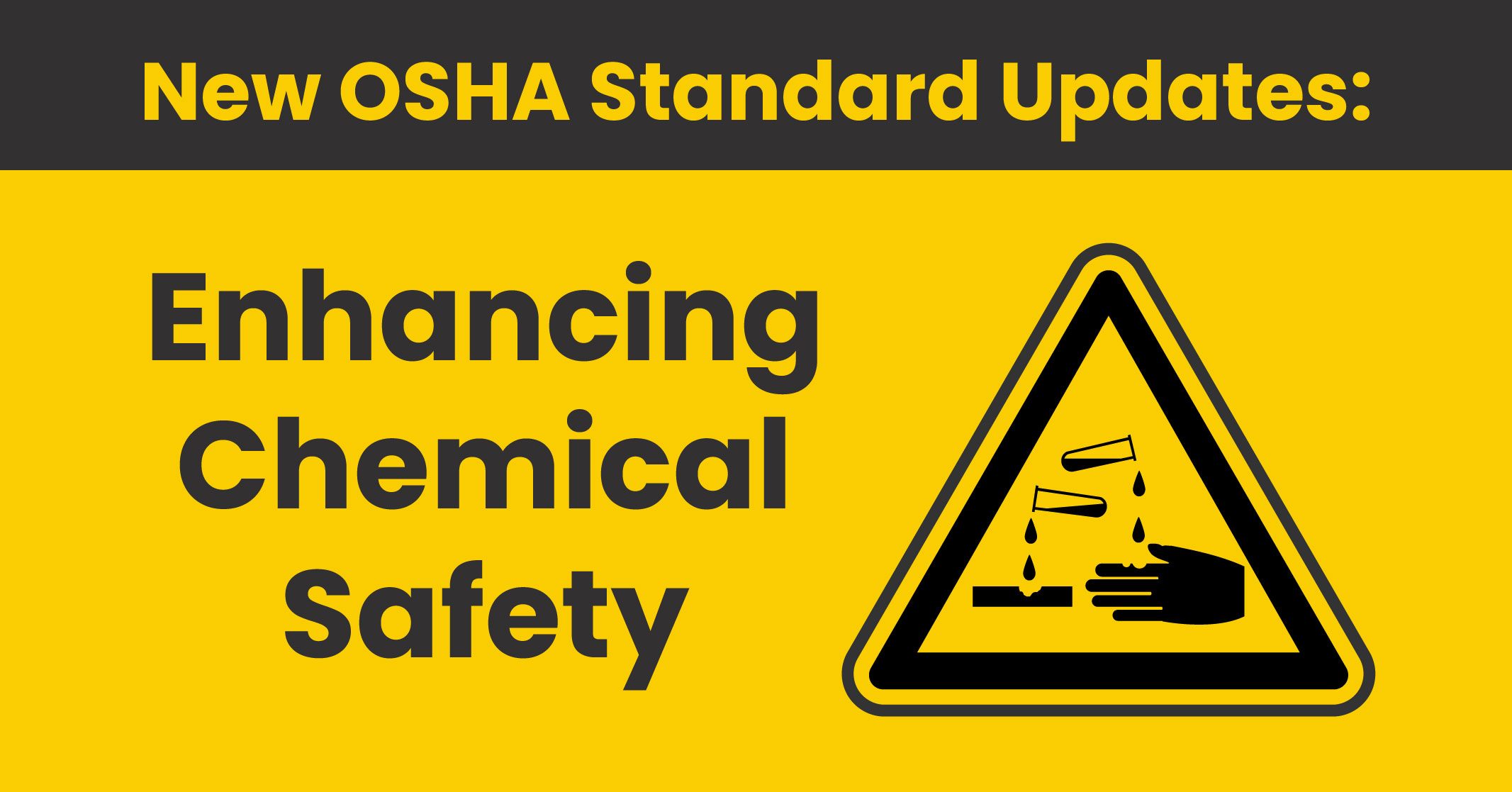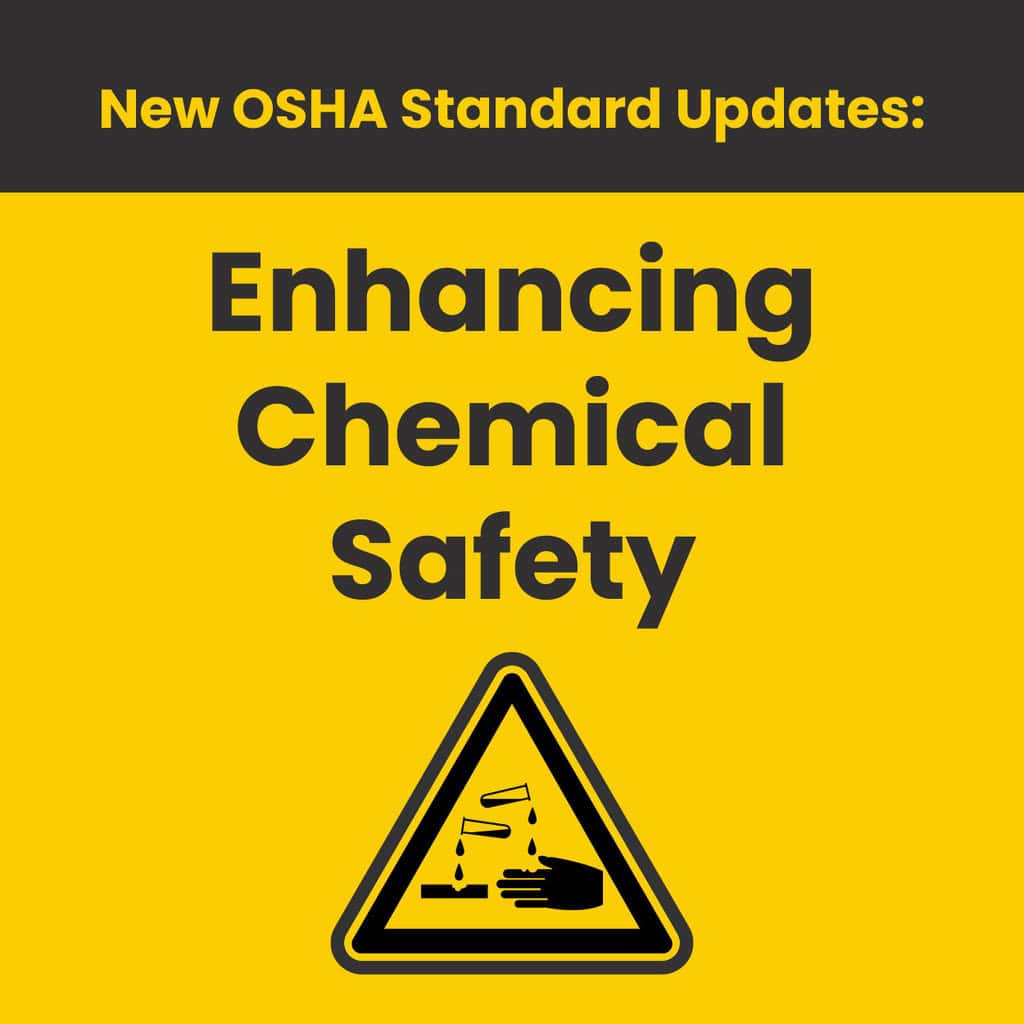
New OSHA Hazard Communication Standard Update: Enhancing Chemical Safety
On May 20, 2024, the Occupational Safety and Health Administration (OSHA) announced a significant update to the Hazard Communication Standard (HCS), marking a pivotal shift towards improved chemical hazard communication. This update, which aligns with the seventh revision of the Globally Harmonized System of Classification and Labeling of Chemicals (GHS), introduces several key changes aimed at enhancing workplace safety through clearer communication and better hazard classification.
What’s New in the HCS Update?
The latest revision of the Hazard Communication Standard brings several notable updates:
1. Updated Definitions and Criteria
The update revises definitions for health hazards, ensuring a more precise classification of chemical substances that pose risks to human health. This includes clearer guidelines on carcinogens, reproductive toxicity, and respiratory sensitizers.
2. Criteria for Physical Hazards
There are new criteria for physical hazards, particularly for substances such as flammable gasses and aerosols. These updates aim to provide more specific guidance on the classification of these hazards, ensuring accurate risk assessment and appropriate safety measures.
3. New Hazard Category for Desensitized Explosives
A significant addition is the introduction of a new hazard category specifically for desensitized explosives. This acknowledges the unique properties and risks associated with these materials, ensuring they are appropriately classified and labeled to prevent accidents and ensure worker safety.
4. Enhanced Labeling Requirements
The revised standard also includes enhancements to labeling requirements. Clear and consistent labels play a crucial role in communicating hazards effectively to workers, enabling them to take necessary precautions when handling chemicals.
5. Updated Safety Data Sheets (SDS)
Safety Data Sheets, or SDS, have been updated to align with the new hazard classifications and criteria. SDS provide comprehensive information about chemical properties, hazards, handling procedures, and emergency measures, empowering workers and emergency responders with vital information.
Implications for Employers and Workers
For employers, compliance with the updated Hazard Communication Standard is paramount. It requires reviewing and updating chemical inventories, revising safety data sheets and labels to reflect the new classifications, and ensuring that employees are trained on the revised hazard communication protocols.
Workers benefit from these updates through clearer and more consistent information about chemical hazards in the workplace. This knowledge enables them to make informed decisions, use appropriate personal protective equipment (PPE), and respond effectively in case of emergencies involving hazardous substances.
Promoting a Safer Workplace Environment
The overarching goal of these updates is to enhance workplace safety by improving the communication of chemical hazards. By aligning with the latest GHS revisions, OSHA aims to harmonize hazard communication standards globally, facilitating trade while prioritizing worker health and safety.
Ensuring Compliance and Preparation
With this new regulation implemented, employers should take steps to comply with the updated HCS, if they haven’t already. This includes:
– Conducting a thorough review of chemical inventories and hazard classifications.
– Updating safety data sheets and labels to reflect the new criteria.
– Providing training to employees on the revised hazard communication standards.
By ensuring compliance with these updated regulations, employers not only fulfill their legal obligations but also contribute to a safer and healthier workplace environment for all.
The updated Hazard Communication Standard represents a significant advancement in chemical safety regulation, aligning with global standards to enhance hazard communication and protect workers. By clarifying hazard classifications, improving labeling, and updating safety data sheets, OSHA reinforces its commitment to promoting workplace safety and mitigating risks associated with hazardous chemicals.
In embracing these changes, employers and workers alike can foster a culture of safety, where informed decisions and proactive measures lead to safer working environments across industries. As we move forward, continued collaboration between regulatory bodies, employers, and workers will be essential in achieving the shared goal of reducing chemical-related incidents and ensuring workplace safety for all.
Ready to work on these changes? Contact YellowBird today! YellowBird is an EHS and Risk Management platform that seamlessly connects skilled workers to both short- and long-term jobs whenever needed, removing all barriers between work and your employees returning safely home.









